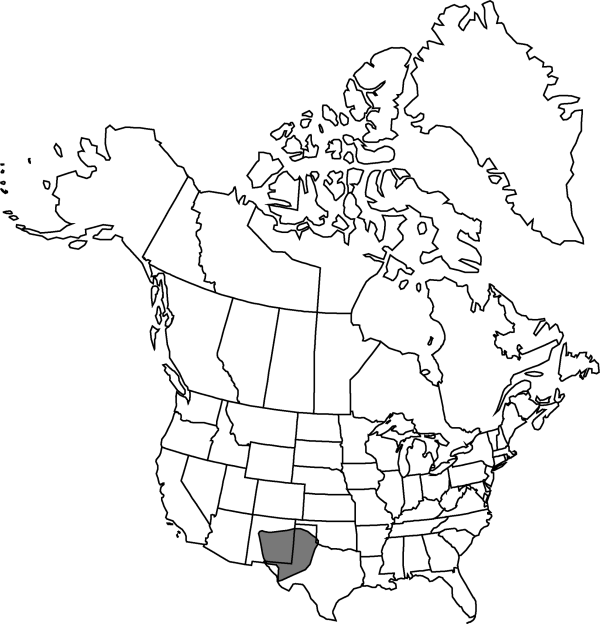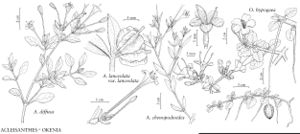Acleisanthes diffusa
Novon 12: 61. 2002.
Plants herbaceous, ± woody at base, overall moderately to densely pubescent with brownish, translucent, conic hairs, often with terminal cell whitish and flattened or brownish and spheroidal, and with appressed, white, flattened, minute, basally attached hairs. Stems erect, decumbent, or prostrate, densely leafy, 10–30 cm. Leaves dull green, commonly drying brownish green, petiolate, those of a pair slightly unequal, gradually reduced toward inflorescence, somewhat succulent; petiole 3–20 mm; blade ovate to ovate-oblong, 10–30 × 4–17 mm, base obtuse to truncate, margins undulate, apex acute to obtuse. Flowers usually 1 in axils of leaves; pedicel 1 mm; perianth 35–48 mm, tube pale dull green, limbs greenish white or pale greenish yellow, often with 5 greenish stripes, 15 mm diam.; stamens (4–)5. Fruits 5–7 mm with flattened, white hairs on body; wings 1–2 mm wide.
Phenology: Flowering late spring–late summer.
Habitat: Dry clay and sandy, commonly calcareous or gypseous, soils
Elevation: 1100-1600 m
Distribution

N.Mex., Okla., Tex.
Discussion
Selected References
None.
